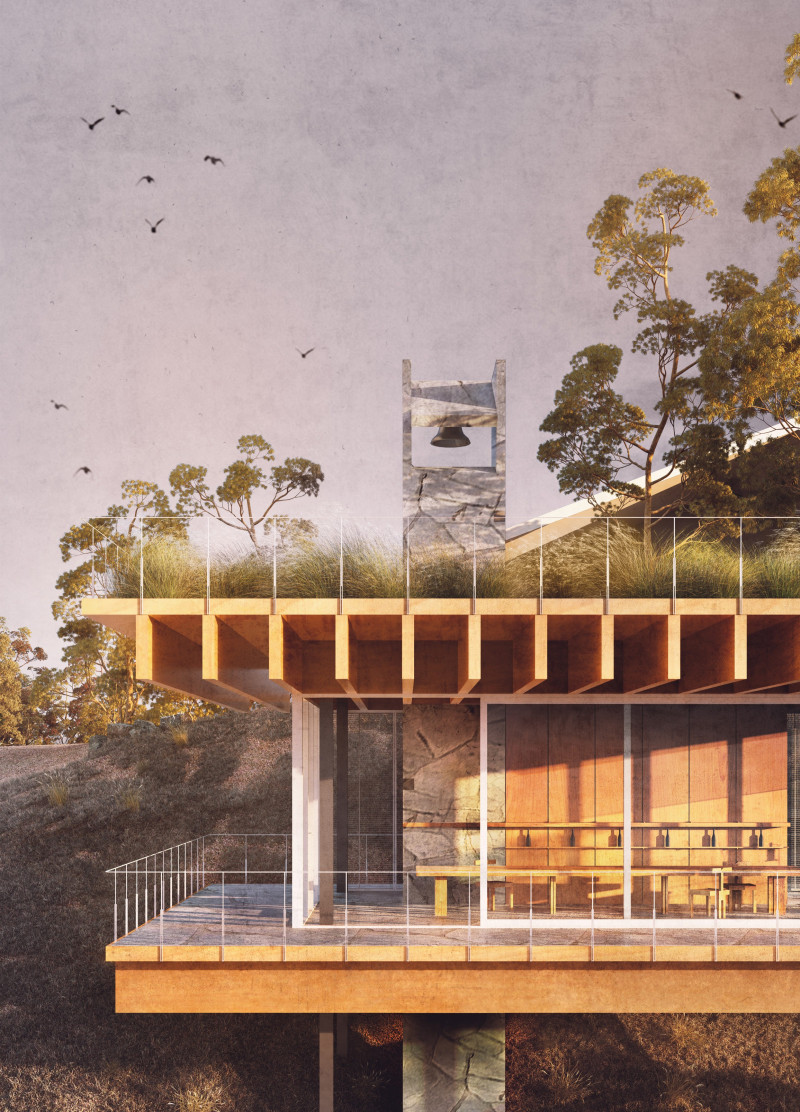5 key facts about this project
The architectural design places significant emphasis on materials that are environmentally responsible, opting for local stone, reclaimed wood, and high-performance glass in order to create an inviting yet durable structure. The use of these materials not only supports sustainability but also enhances the building's connection to the local context. By choosing elements that resonate with the area’s natural characteristics, the design exhibits a sensitivity to its surroundings, fostering a sense of place and belonging.
Functionally, the project is crafted to serve as a multi-use space that accommodates various community activities. It incorporates flexible areas that can be reconfigured to host events, workshops, and gatherings. The layout is designed to promote interaction, with open spaces that encourage collaboration and communication among users. The incorporation of natural light features, such as large windows and skylights, creates a welcoming atmosphere and minimizes reliance on artificial lighting, boosting the building's overall sustainability.
In terms of important structural details, the project utilizes cantilevered forms to create shaded outdoor areas that enhance usability year-round. This thoughtful approach not only adds to the aesthetic appeal of the design but also contributes to energy efficiency by reducing heat gain during warmer months. Additionally, the project features green roofs and vertical gardens, which contribute to biodiversity, improve air quality, and provide insulation for the building, aligning with modern architectural trends that prioritize ecological considerations.
The design also embraces the concept of biophilia, promoting a strong connection between its users and the natural world through the integration of lush landscaping and outdoor spaces. By incorporating features such as terraces and gardens, the architecture fosters an environment that encourages outdoor engagement, enhancing the overall user experience. The fluidity between indoor and outdoor areas is a noteworthy element, creating a seamless transition that enhances the building's functionality and livability.
Unique design approaches in this project include innovative use of local craftsmanship and technology. Collaboration with local artisans ensures that traditional techniques are respected and included in the design, bringing authenticity and a sense of heritage to the project. Furthermore, incorporating smart technologies throughout the building allows for enhanced control over environmental conditions, providing users with a customized experience that is both comfortable and efficient.
In summary, this architectural project embodies a harmonious blend of sustainability, community orientation, and innovative design strategies. The choice of materials, thoughtful layout, and commitment to ecological principles create a refined space that is not only functional but also enriching for its users. As this project exemplifies progressive architectural ideas, I encourage readers to explore the architectural plans, architectural sections, and architectural designs presented in the project documentation for a deeper understanding of its realization and the concepts at play. By engaging with these elements, one can appreciate the intricacies and intentions behind this remarkable design endeavor.


























